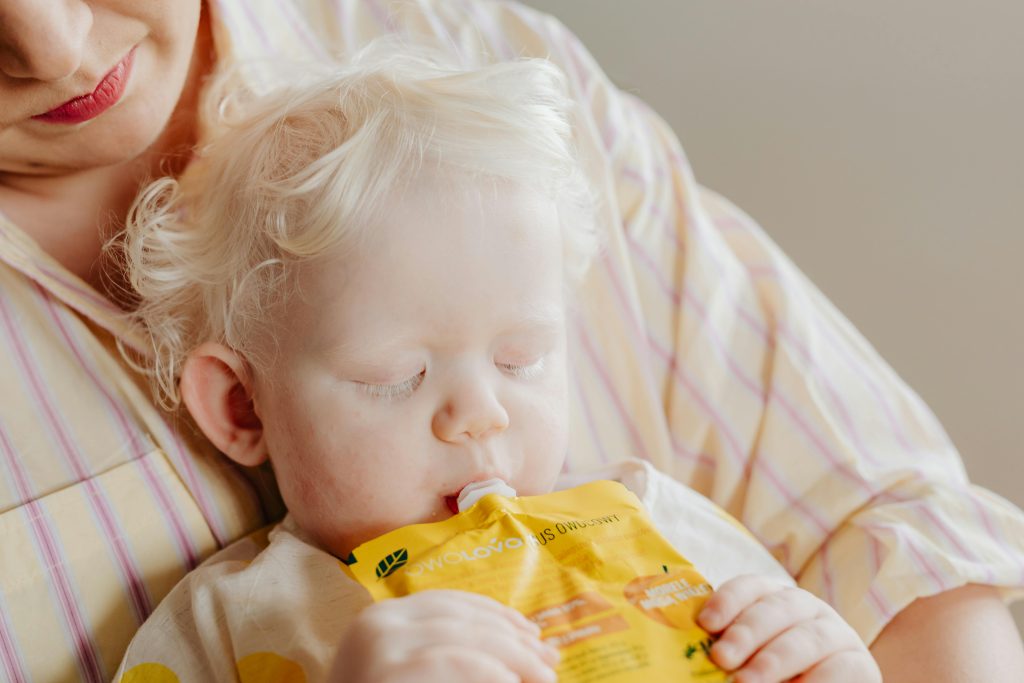
As a new parent, one of the most crucial decisions you’ll face is how to feed your precious little one. 🍼👶 The age-old debate of breastfeeding vs. bottle feeding can leave many feeling overwhelmed and uncertain. But here’s the truth: there’s no one-size-fits-all solution.
Every parent-baby duo is unique, and what works for one family might not work for another. That’s why it’s essential to understand your options, weigh the pros and cons, and make an informed decision that aligns with your lifestyle, values, and circumstances. Whether you choose to breastfeed, bottle-feed, or opt for a combination of both, remember that the best choice is the one that keeps your baby healthy and happy while maintaining your well-being.
In this comprehensive guide, we’ll dive deep into the world of infant feeding. We’ll explore the ins and outs of breastfeeding and bottle feeding, compare their benefits and challenges, and discuss the factors you should consider when making your decision. We’ll also introduce you to the concept of combination feeding, which might just be the perfect middle ground for some families. So, let’s embark on this journey together and find the feeding solution that’s right for you and your little one! 🤱🍼💖
Understanding Breastfeeding

Health benefits for baby
Breastfeeding offers numerous health advantages for infants, making it the gold standard in infant nutrition. Here are some key benefits:
- Provides optimal nutrition
- Boosts immune system
- Reduces risk of infections
- Lowers risk of allergies and asthma
- Promotes healthy weight gain
| Benefit | Description |
|---|---|
| Antibodies | Breast milk contains antibodies that protect against infections |
| Digestibility | Easily digestible, reducing risk of gastrointestinal issues |
| Brain development | Contains nutrients crucial for cognitive development |
| SIDS prevention | Associated with reduced risk of Sudden Infant Death Syndrome |
Health benefits for mother
Breastfeeding not only benefits the baby but also offers significant advantages for the mother:
- Promotes faster postpartum recovery
- Reduces risk of postpartum depression
- Lowers risk of certain cancers (breast and ovarian)
- Helps with weight loss after pregnancy
- May reduce risk of osteoporosis later in life
Bonding and emotional connection
The act of breastfeeding fosters a unique bond between mother and child. This skin-to-skin contact releases oxytocin, promoting feelings of love and attachment. The close physical proximity during feeding sessions helps create a strong emotional connection that can last well beyond infancy.
Cost-effectiveness
Breastfeeding is a highly cost-effective feeding option for families. Unlike formula, breast milk is free and readily available. This can lead to significant savings over time, especially considering the high cost of quality infant formula. Additionally, the health benefits of breastfeeding may result in fewer medical expenses for both mother and child.
Now that we’ve explored the various aspects of breastfeeding, let’s move on to examine bottle feeding and its characteristics.
Exploring Bottle Feeding

Types of formula available
When exploring bottle feeding options, it’s essential to understand the various types of formula available. Here’s a breakdown of the most common types:
| Formula Type | Description | Best For |
|---|---|---|
| Cow’s Milk-Based | Most common, closest to breast milk | Most babies |
| Soy-Based | Made from soy protein | Lactose intolerant babies |
| Hypoallergenic | Partially or extensively hydrolyzed | Babies with milk allergies |
| Specialized | For specific medical conditions | Premature or low birth weight babies |
Convenience and flexibility
Bottle feeding offers several advantages in terms of convenience and flexibility:
- On-demand feeding without preparation
- Easy to measure and track intake
- Allows others to feed the baby
- Freedom to be away from the baby for longer periods
Sharing feeding responsibilities
One of the significant benefits of bottle feeding is the ability to share feeding responsibilities. This can lead to:
- Greater involvement of partners in infant care
- More balanced parenting duties
- Improved sleep for the primary caregiver
- Stronger bonds between the baby and other family members
Measuring and tracking baby’s intake
Bottle feeding allows for precise measurement of your baby’s milk intake, which can be beneficial for:
- Ensuring proper nutrition
- Identifying feeding patterns
- Addressing concerns about weight gain or loss
- Communicating with healthcare providers about feeding habits
Now that we’ve explored bottle feeding options, let’s compare breastfeeding and bottle feeding to help you make an informed decision.
Comparing Breastfeeding and Bottle Feeding

Nutritional differences
When comparing breastfeeding and bottle feeding, it’s essential to understand the nutritional differences:
| Nutrient | Breast Milk | Formula |
|---|---|---|
| Antibodies | Present | Absent |
| Tailored composition | Yes | No |
| Digestibility | Easier | Moderate |
| Vitamin D | Low | Fortified |
| Iron | Low (after 6 months) | Fortified |
Breast milk provides unique antibodies and adapts to the baby’s needs, while formula offers consistent nutrition with added vitamins and minerals.
Impact on sleep patterns
Sleep patterns can vary depending on the feeding method:
- Breastfed babies often wake more frequently due to faster digestion
- Formula-fed infants may sleep longer stretches
- Breast milk contains sleep-inducing hormones
- Bottle feeding allows for precise measurement of intake
Time commitment
Both methods require significant time investment:
- Breastfeeding:
- On-demand feeding
- No preparation time
- Longer feeding sessions initially
- Bottle feeding:
- Scheduled feedings possible
- Preparation and cleaning time
- Shorter feeding sessions
Public feeding considerations
Feeding in public can present different challenges:
- Breastfeeding: More discreet, no equipment needed
- Bottle feeding: Easier in public, but requires carrying supplies
Effect on postpartum weight loss
Weight loss experiences can differ:
- Breastfeeding burns extra calories, potentially aiding weight loss
- Bottle feeding doesn’t provide this metabolic boost
- Individual results vary based on diet and activity levels
Now that we’ve compared these aspects, let’s explore the factors to consider when choosing between breastfeeding and bottle feeding.
Factors to Consider When Choosing

A. Personal health and medical conditions
When deciding between breastfeeding and bottle feeding, it’s crucial to consider your personal health and any medical conditions you may have. Certain medications or health issues can affect your ability to breastfeed safely or produce sufficient milk. Here’s a comparison of how different health factors can influence your feeding choice:
| Health Factor | Breastfeeding Impact | Bottle Feeding Impact |
|---|---|---|
| Thyroid disorders | May affect milk supply | No direct impact |
| Breast surgery | Can reduce milk production | No impact |
| Diabetes | Requires careful blood sugar monitoring | Easier to manage |
| Certain medications | May pass through breast milk | No risk to baby |
Always consult with your healthcare provider to determine the best option based on your specific health situation.
B. Lifestyle and work commitments
Your lifestyle and work commitments play a significant role in choosing a feeding method. Consider the following factors:
- Time availability for feeding sessions
- Flexibility in your daily schedule
- Work environment and pumping accommodations
- Travel frequency and duration
Bottle feeding may offer more flexibility for working parents, while breastfeeding can be more convenient for those who are primarily at home.
C. Support system availability
The support you have can greatly influence your feeding success. Key aspects to consider include:
- Partner involvement in feeding
- Family members’ availability to help
- Access to lactation consultants or support groups
- Employer’s policies on pumping breaks and facilities
A strong support system can make breastfeeding more manageable, while bottle feeding may be easier to delegate to others.
D. Baby’s individual needs
Every baby is unique, and their specific needs should guide your feeding decision. Consider:
- Any health issues or allergies your baby may have
- Their feeding patterns and preferences
- Growth rate and nutritional requirements
Some babies may have difficulty latching, making bottle feeding a more practical choice. Others may thrive on breast milk’s custom-tailored nutrition. Ultimately, the best feeding method is one that meets both your and your baby’s needs while ensuring proper growth and development.
Combination Feeding: The Best of Both Worlds

Benefits of mixed feeding
Combination feeding offers a flexible approach to infant nutrition, blending the advantages of both breastfeeding and bottle feeding. Here are some key benefits:
- Increased feeding flexibility
- Shared responsibility between parents
- Potential for extended breastfeeding duration
- Easier transition to work for nursing mothers
| Benefit | Description |
|---|---|
| Nutritional balance | Combines breast milk’s unique benefits with formula’s consistent nutrition |
| Emotional bonding | Allows both parents to experience feeding-related bonding |
| Reduced stress | Alleviates pressure on the primary caregiver |
Strategies for successful combination feeding
To ensure a smooth mixed feeding experience, consider these strategies:
- Establish breastfeeding first
- Introduce bottles gradually
- Maintain consistent feeding schedules
- Use paced bottle feeding technique
- Choose appropriate nipple flow
Consistency is key when implementing combination feeding. Stick to a regular feeding routine and monitor your baby’s response to different feeding methods.
Overcoming potential challenges
While combination feeding offers numerous benefits, it may present some challenges. Common issues include:
- Nipple confusion
- Milk supply fluctuations
- Bottle preference
To address these challenges, maintain regular skin-to-skin contact during breastfeeding sessions and use breast-like bottle nipples. Additionally, consider pumping to maintain milk supply when using formula. With patience and persistence, most families can successfully navigate combination feeding, enjoying the best of both worlds in infant nutrition.
Making an Informed Decision

Consulting with healthcare professionals
When making a decision about feeding your baby, it’s crucial to consult with healthcare professionals. Pediatricians, lactation consultants, and midwives can provide valuable insights based on your specific situation.
Here’s a list of topics to discuss with your healthcare provider:
- Your medical history and any potential contraindications
- Your baby’s health and nutritional needs
- Potential challenges and solutions for both feeding methods
- Available support systems and resources
Considering personal values and preferences
Your personal values and preferences play a significant role in choosing the right feeding method. Consider the following factors:
| Factor | Breastfeeding | Bottle Feeding |
|---|---|---|
| Time commitment | More time-intensive | More flexible |
| Bonding | Direct skin-to-skin contact | Can be shared with partners |
| Convenience | No preparation needed | Requires preparation |
| Cost | Generally less expensive | More expensive (formula costs) |
Evaluating available resources and support
The success of your chosen feeding method often depends on the resources and support available to you. Consider:
- Family and partner support
- Workplace accommodations for pumping or breastfeeding
- Access to lactation consultants or support groups
- Availability of quality formula and feeding equipment
Remember, there’s no one-size-fits-all approach to infant feeding. By carefully considering these factors and consulting with professionals, you can make an informed decision that best suits you and your baby’s needs. Next, we’ll recap the key points to help you feel confident in your choice.

Choosing between breastfeeding and bottle feeding is a personal decision that depends on various factors unique to each family. Both methods have their advantages and challenges, and it’s essential to consider your lifestyle, health, and baby’s needs when making this choice. Remember that there’s no one-size-fits-all approach, and combination feeding can offer flexibility for many parents.
Ultimately, the best feeding option is the one that ensures your baby receives proper nutrition and allows you to bond with your little one. Consult with healthcare professionals, seek support from experienced parents, and trust your instincts. Whatever method you choose, know that you’re making the best decision for you and your baby.





